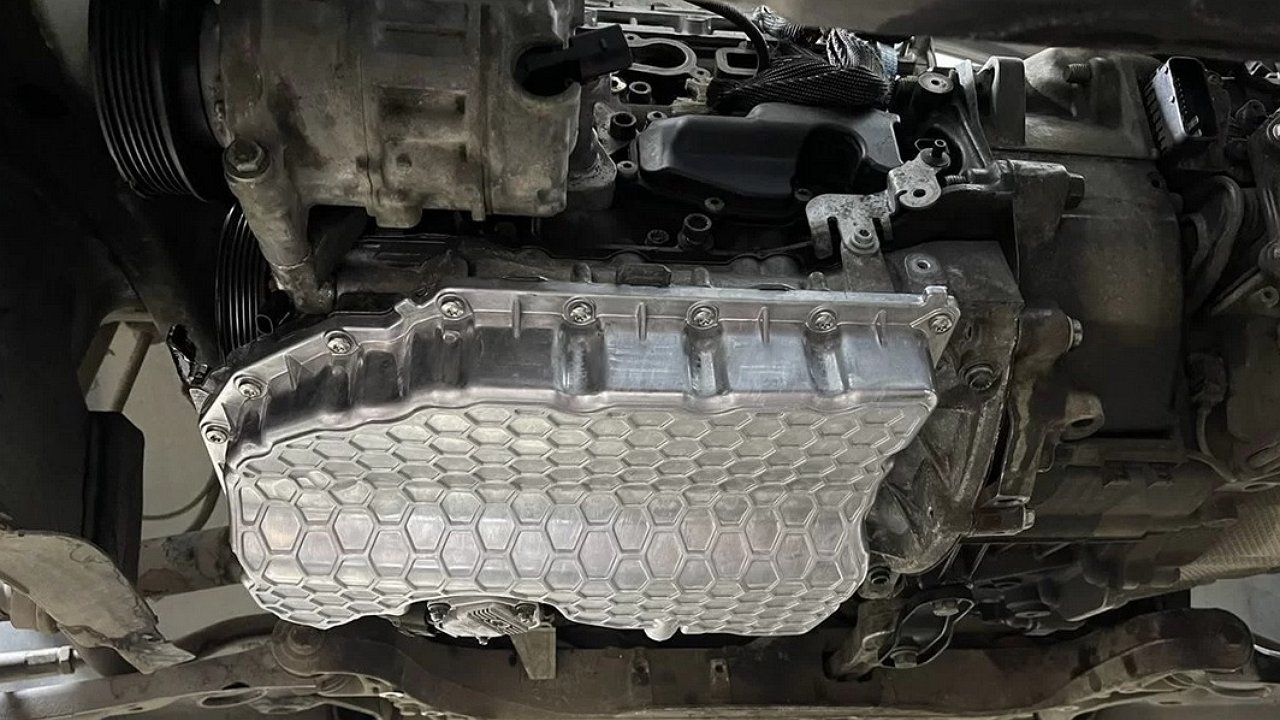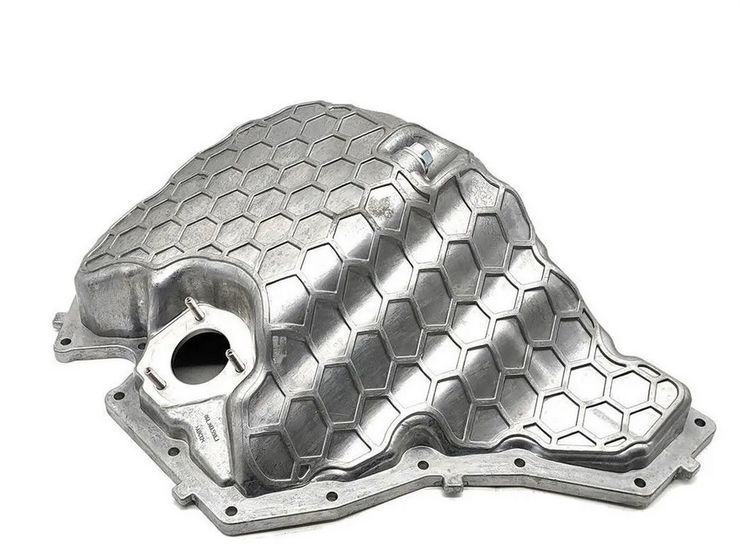Why do car owners install a “cold sump” on their cars?
- July 17, 2023
- 0
According to most motorists, attempts to improve the constructive “styles” of their cars are the fate of the proud owners of the Zhiguli, Volga and other heritage of
According to most motorists, attempts to improve the constructive “styles” of their cars are the fate of the proud owners of the Zhiguli, Volga and other heritage of

Sometimes in the conversations of motorists such an expression as “cold sump” sometimes slips through. This is the engine oil sump. Initially it was made of metal. But some genius once came up with the idea: since this part does not carry a heavy load in the engine, it can be made from something lighter. Like plastic! No sooner said than done. And so plastic pallets appeared on the turbocharged engines of the Volkswagen concern, some BMW engines and power units of a number of other car manufacturers. Like, by the way, the Cummins ISF engine, which is on the GAZelle Business, Sobol, Next. And for many trucks (especially tractors) it is also made of polymer.
The first innovators who came up with such a constructive solution must have received good bonuses from management. After all, almost a kilo of car weight is saved by replacing metal with plastic in the manufacture of the oil pan of a passenger car. The truck has more. Well, the production cost is reduced. Plastic is cheaper than metal.
And on the other hand, a plastic crankcase made of heat-resistant plastic gives off the heat of the oil to the environment much worse, and the mechanical strength of such a part leaves no hope for a successful outcome of a meeting of plastic with some kind pothole in the road!
So the “lucky” owners of cars with such an “improvement” had a good reason to force tune their cars. For many – after the appearance of holes in plastic pallets. Buying exactly the same part, but only from aluminum is not a particularly expensive task. A similar spare part for a passenger car, depending on the design features and layout of a particular engine, costs 5000-7500 rubles. In addition, for the event you will need to set aside an amount to pay for the work of a gas station mechanic, the purchase of new fasteners and the purchase of new engine oil and a filter. “In a circle” replacing plastic with aluminum will cost 12,000-15,000 rubles.
But after that, we don’t just get a more durable part, in which case it comes into contact with the ground first. Aluminum, from which the new oil sump is made, cools the oil much better than plastic and releases the heat to the atmosphere. In addition, to enhance this effect, additional ribs and projections are provided on its outer surface. They both give greater mechanical strength to the part and increase the surface area to further improve heat dissipation. As a result, forced tuning using a “cold sump” significantly extends the life of the engine – thanks to better cooling and a serious reduction in the likelihood of lubrication loss due to a broken plastic oil sump.

Sometimes in the conversations of motorists such an expression as “cold sump” sometimes slips through. This is the engine oil sump. Initially it was made of metal. But some genius once came up with the idea: since this part does not carry a heavy load in the engine, it can be made from something lighter. Like plastic! No sooner said than done. And so plastic pallets appeared on the turbocharged engines of the Volkswagen concern, some BMW engines and power units of a number of other car manufacturers. Like, by the way, the Cummins ISF engine, which is on the GAZelle Business, Sobol, Next. And for many trucks (especially tractors) it is also made of polymer.
The first innovators who came up with such a constructive solution must have received good bonuses from management. After all, almost a kilo of car weight is saved by replacing metal with plastic in the manufacture of the oil pan of a passenger car. The truck has more. Well, the production cost is reduced. Plastic is cheaper than metal.
And on the other hand, a plastic crankcase made of heat-resistant plastic gives off the heat of the oil to the environment much worse, and the mechanical strength of such a part leaves no hope for a successful outcome of a meeting of plastic with some kind pothole in the road!
So the “lucky” owners of cars with such an “improvement” had a good reason to force tune their cars. For many – after the appearance of holes in plastic pallets. Buying exactly the same part, but only from aluminum is not a particularly expensive task. A similar spare part for a passenger car, depending on the design features and layout of a particular engine, costs 5000-7500 rubles. In addition, for the event you will need to set aside an amount to pay for the work of a gas station mechanic, the purchase of new fasteners and the purchase of new engine oil and a filter. “In a circle” replacing plastic with aluminum will cost 12,000-15,000 rubles.
But after that, we don’t just get a more durable part, in which case it comes into contact with the ground first. Aluminum, from which the new oil sump is made, cools the oil much better than plastic and releases the heat to the atmosphere. In addition, to enhance this effect, additional ribs and projections are provided on its outer surface. They both give greater mechanical strength to the part and increase the surface area to further improve heat dissipation. As a result, forced tuning using a “cold sump” significantly extends the life of the engine – thanks to better cooling and a serious reduction in the likelihood of lubrication loss due to a broken plastic oil sump.
Source: Avto Vzglyad
Donald Salinas is an experienced automobile journalist and writer for Div Bracket. He brings his readers the latest news and developments from the world of automobiles, offering a unique and knowledgeable perspective on the latest trends and innovations in the automotive industry.